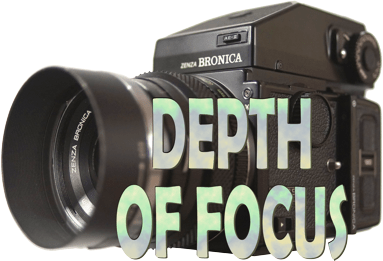I’ve been wondering how to illustrate the title in a logo. The photo above, which is in-focus in the center and out-of-focus on front edge of the lens and the back of the camera, illustrates depth of field. Depth of focus applies to where the image is in focus, inside the camera, behind the lens. So, that illustration still eludes me. A final logo is still in the future.
The Bronica medium format camera will be used by Barbara in the film. In an early scene, Barbara and her sister, Maureen, talk about how the camera was converted from film to digital by replacing the film cartridge on the back with a big digital sensor. One concern of such a conversion is: Will the lens focus on the sensor? This is where depth of focus is important. Too geeky?
The film is about the ways in which people envision their lives through dreams and how those dreams often may not be in focus with reality. We explored that theme somewhat with the character of Rusty in Nudged. In the new film, every character will be examined both in their dreams and in what passes for reality.
The photograph was taken using the photo mode of my Sony digital cinema camera with a Zeiss Distagon ZF.2 28mm Lens (60th of a second, f2.0, and ISO 1000).




 The new film will work on a number of levels: current time, flashbacks and dreams. For the dreams I’ve been exploring Celtic myths and characters from Irish & Celtic history and traditions. One such story is the hare and the hunter.
The new film will work on a number of levels: current time, flashbacks and dreams. For the dreams I’ve been exploring Celtic myths and characters from Irish & Celtic history and traditions. One such story is the hare and the hunter.